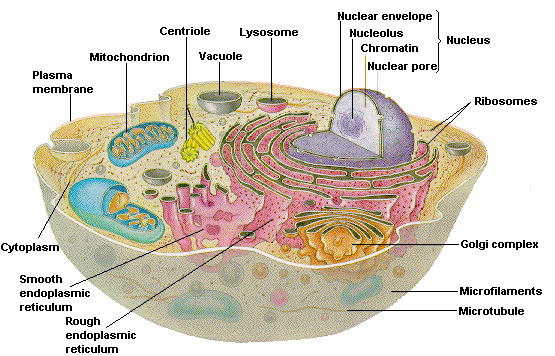Neurons
The function of neurons is to carry information/messages throughout the brain and body.
Nerve cell form a network where each nerve cell receives information form many (about 1000) other nerve cells. This information is then collected and if strong enough an electrical discharge is generated (called an action potential or a nerve impulse). This action potential carries information to the next neuron in the network.
Nerve cells have a cell body or soma and processes extend from it. These processes are of two kinds. Dendrites that are highly branched (like the branches of a tree) processes that collect incoming information and carry it to the soma. Axons carry information away from the cell body to other nerve cells. This type of process can be short (if nerve cells are close together) or very long of nerve cells are far apart (in different parts of the brain or in the body). Axons may also be branched so that they can send information to more than one neuron.
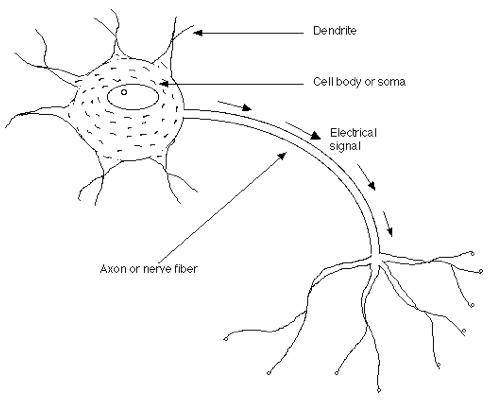
Neurons need other brain cells to function
Although nerve cells form the basis of our nervous system they cannot function properly without the help from cells called glial cells. We have 100 billion neurons in our brain but have trillions of glial cells. There are different types of glial cells – oligodendrocytes, astrocytes and microglia.
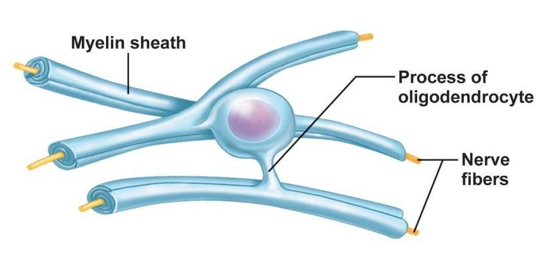
Oligodendrocytes
These cells produce a substance called myelin and wrap it around axon processes. These myelin sheaths act as insulation for the axons allowing nerve impulses (action potentials/messages) to be carried rapidly.
Astrocytes
These cells have many important functions. They
- provide physical support for neurons
- provide nutrients (food) for neurons
- make sure neurons can transmit information correctly and efficiently
- respond to injury or disease by making and releasing factors (proteins) that protect neurons
- help remove debris from the brain (like dead neurons)
- have many processes that they use to communicate with other cell types in the brain (neurons, microglial cells, blood vessels, other astrocytes)
A cartoon of an astrocyte contacting a neuron and a blood vessel
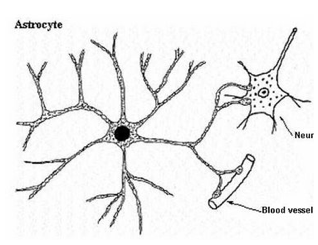
Microglial cells
These cells, together with astrocytes, are part of the immune system in the brain. They police the environment and defend against invading microorganisms, damage and disease
Interaction among brain cells
Glial cells interact with neurons and the surrounding blood vessels. Oligodendrocytes wrap myelin around axons to increase the speed of neuronal transmission. Astrocytes extend processes to contact blood vessels (obtain food for neurons) and synapses (where messages are passed from one nerve cell to the next). Microglia keep the brain under surveillance for damage or infection.
A cartoon of a microglial cell
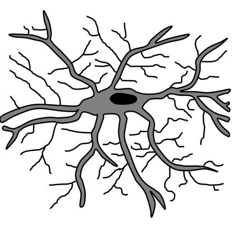
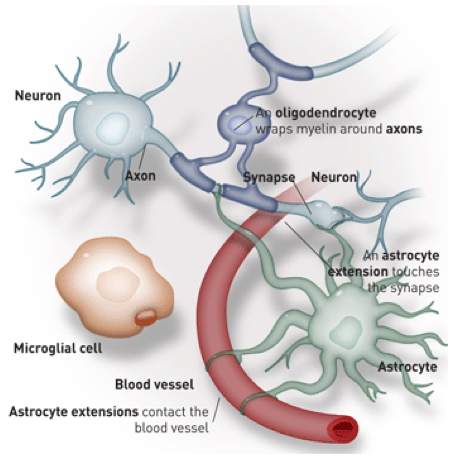
If anything occurs (gene defect/protein defect) that prevents any brain cell from functioning or communicating properly major problems can arise.
